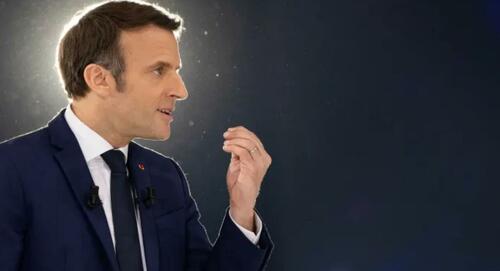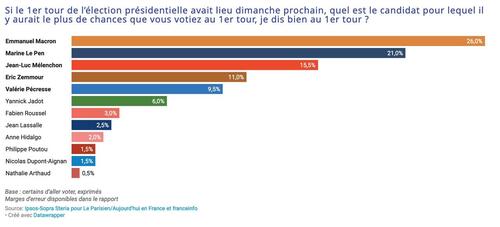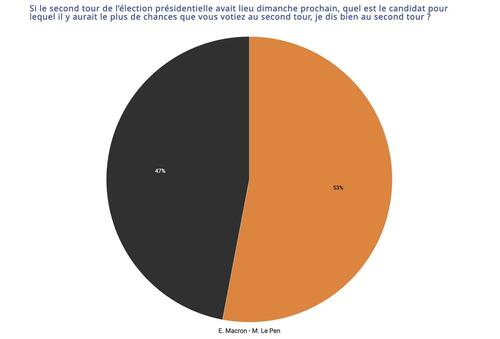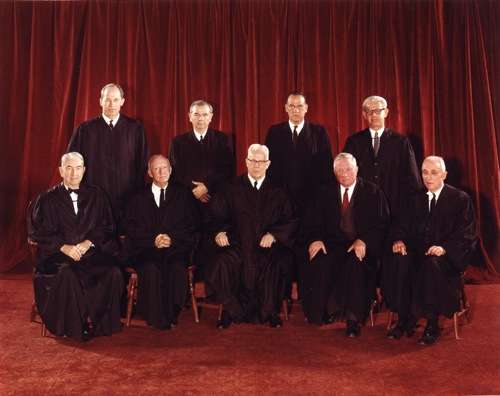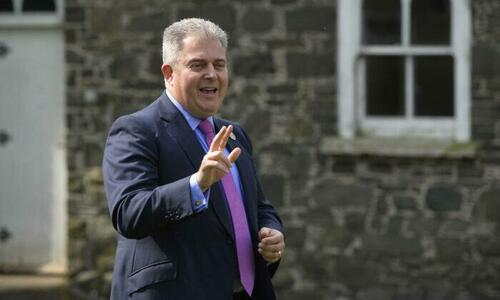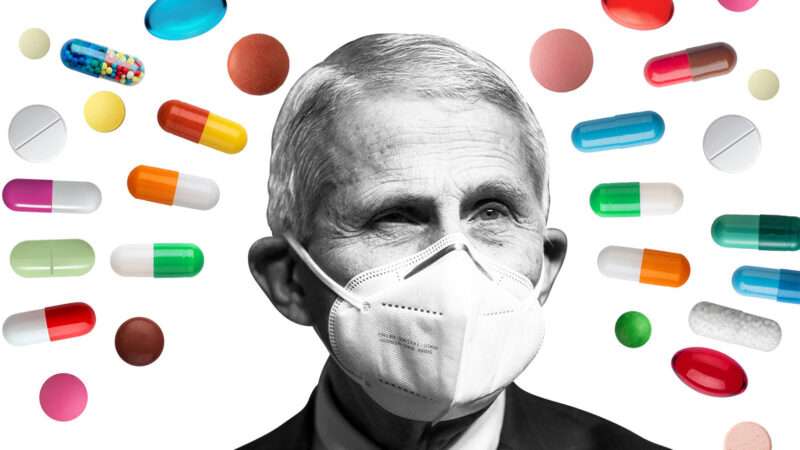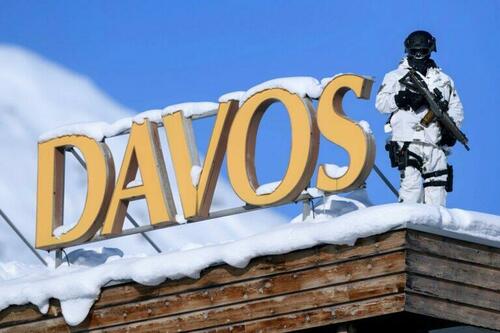In March 2020, the iconoclastic French microbiologist Didier Raoult announced that the anti-malaria drug hydroxychloroquine had cured all 36 COVID-19 patients enrolled in his clinical trial. Many of Raoult’s colleagues rejected his conclusions, arguing that the trial was too small and noting that it was not randomized and controlled. But as the deadly coronavirus spread rapidly throughout the world and governments responded with draconian lockdowns, public attention was quickly drawn to the chance that a common and inexpensive drug might rid the world of the danger.
President Donald Trump promoted hydroxychloroquine as a “game changer,” which raised the ire of many medical and public health experts. Without randomized controlled trials, they complained, it was irresponsible to prescribe the drug for infected patients. Under pressure from Trump, other Republican politicians, and conservative pundits, the Food and Drug Administration (FDA) nevertheless issued an emergency use authorization (EUA) for adding hydroxychloroquine to the strategic national stockpile of COVID-19 treatments.
After numerous randomized controlled trials failed to demonstrate the drug’s effectiveness, the FDA revoked the EUA, leaving the national stockpile with 63 million unused doses of hydroxychloroquine. Florida’s Republican governor, Ron DeSantis, had purchased 1 million doses for the state’s stockpile, which likewise remained unused.
There is a difference, however, between the claim that a drug has been proven not helpful and the weaker claim that it has not been proven helpful. Despite the failure to validate Raoult’s claims, many Americans believed that hydroxychloroquine’s potential benefits outweighed its minimal risks. Exercising their right to self-medicate, some people infected by the coronavirus continued to take the drug.
The hydroxychloroquine brouhaha illustrates the roiling conflict between the scientific establishment and its uncredentialed challengers. Because the internet has democratized science, the academy no longer has a monopoly on specialized information. Based on their own assessments of that information, lay people can chime in and may even end up driving the scientific narrative, for good or ill.
Meanwhile, the internet is developing its own would-be gatekeepers. Those who oversee the major social media platforms can filter information and discourse on their platforms. Pleasing the priesthood enhances their credibility with elites and might protect them from criticism and calls for regulatory intervention, but they risk being captured in the process.
Challenges to the priesthoods that claim to represent the “scientific consensus” have made them increasingly intolerant of new ideas. But academic scientists must come to terms with the fact that search engines and the digitization of scientific literature have forever eroded their authority as gatekeepers of knowledge, a development that presents opportunities as well as dangers.
Experts, Yes; Priesthoods, No
Most people prefer experts, of course, especially when it comes to health care. As a surgeon myself, I can hardly object to that tendency. But a problem arises when some of those experts exert outsized influence over the opinions of other experts and thereby establish an orthodoxy enforced by a priesthood. If anyone, expert or otherwise, questions the orthodoxy, they commit heresy. The result is groupthink, which undermines the scientific process.
The COVID-19 pandemic provided many examples. Most medical scientists, for instance, uncritically accepted the epidemiological pronouncements of government-affiliated physicians who were not epidemiologists. At the same time, they dismissed epidemiologists as “fringe” when those specialists dared to question the conventional wisdom.
Or consider the criticism that rained down on Emily Oster, a Brown University economist with extensive experience in data analysis and statistics. Many dismissed her findings—that children had a low risk of catching or spreading the virus, an even lower risk of getting seriously ill, and should be allowed to normally socialize during the pandemic—because she wasn’t an epidemiologist. Ironically, one of her most vocal critics was Sarah Bowen, a sociologist, not an epidemiologist.
The deference to government-endorsed positions is probably related to funding. While “the free university” is “historically the fountainhead of free ideas and scientific discovery,” President Dwight Eisenhower observed in his farewell address, “a government contract becomes virtually a substitute for intellectual curiosity.” He also warned that “we should be alert to the…danger that public policy could itself become captive of a scientific technological elite.” Today we face both problems.
The Orthodoxy in Earlier Times
The medical science priesthood has a long history of treating outside-the-box thinkers harshly. Toward the end of the 18th century, Britain’s Royal Society refused to publish Edward Jenner’s discovery that inoculating people with material from cowpox pustules—a technique he called “vaccination,” from the Latin word for cow, vacca—prevented them from getting the corresponding human disease, smallpox. Jenner’s medical colleagues considered this idea dangerous; one member of the Royal College of Physicians even suggested that the technique could make people resemble cows.
At the time, many physicians were making a good living by performing variolation, which aimed to prevent smallpox by infecting patients with pus from people with mild cases. Some saw vaccination as a threat to their income. Thankfully, members of Parliament liked Jenner’s idea and appropriated money for him to open a vaccination clinic in London. By the early 1800s, American doctors had adopted the technique. In 1805, Napoleon ordered smallpox vaccination for all of his troops.
Half a century later, the prestigious Vienna General Hospital fired Ignaz Semmelweis from its faculty because he required his medical students and junior physicians to wash their hands before examining obstetrical patients. Semmelweis connected puerperal sepsis—a.k.a. “childbed fever,” then a common cause of postnatal death—to unclean hands. Ten years after Semmelweis returned to his native Budapest, he published The Etiology, Concept and Prophylaxis of Childbed Fever. The medical establishment rained so much vitriol on him that it drove him insane. (Or so the story goes: Some think, in retrospect, that Semmelweis suffered from bipolar disorder.) He died in an asylum in 1865 at the age of 47.
The “germ theory” anticipated by Semmelweis did not take hold until the late 1880s. That helps explain why, in 1854, the public health establishment rebuffed the physician John Snow after he traced a London cholera epidemic to a water pump on Broad Street. Snow correctly suspected that water from the pump carried a pathogen that caused cholera.
Public health officials clung instead to the theory that the disease was carried by a miasma, or “bad air.” The British medical journal The Lancet published a brutal critique of Snow’s theory, and the General Board of Health determined that his idea was “scientifically unsound.” But after another outbreak of cholera in 1866, the public health establishment acknowledged the truth of Snow’s explanation. The incident validated the 19th century classical liberal philosopher Herbert Spencer’s warning that the public health establishment had come to represent entrenched political interests, distorting science and prolonging the cholera problem. “There is an evident inclination on the part of the medical profession to get itself organized after the fashion of the clericy,” he wrote in 1851’s Social Statics. “Surgeons and physicians are vigorously striving to erect a medical establishment akin to our religious one. Little do the public at large know how actively professional publications are agitating for state-appointed overseers of the public health.”
Heterodoxy Finds a Welcome Environment
Advances like these made the medical establishment more receptive to heterodoxy. As new knowledge overthrew long-held dogmas in the 20th century, scientists were open to fresh hypotheses.
As a surgical resident in the 1970s, for example, I was taught to excise melanomas with about a five-centimeter margin of normal skin, the theory being that dangerous skin cancer should be given a wide berth. A skin graft is needed to cover a defect that size. This approach was never evidence-based but had been universally accepted since the early 20th century. In the mid-’70s, several clinical researchers challenged the dogma. Multiple studies revealed that the five-centimeter margin was no better than a two-centimeter margin. Now the five-centimeter rule is a thing of the past.
For decades, physicians thought the main cause of peptic ulcer disease was hyperacidity in the stomach, often stress-related. In the 1980s, a gastroenterology resident, Barry Marshall, noted the consistent appearance of a bacterium, Helicobacter pylori, on the slides of stomach biopsy specimens he sent to the lab. He suspected the bacterium caused the ulcers. He ingested the bacteria, which indeed gave him ulcers. He then easily cured himself with antibiotics. By the early 1990s, several studies had confirmed Marshall’s discovery, and today Helicobacter pylori is recognized as the cause of most peptic ulcers.
“Off-label” use of FDA-approved drugs is another path to medical innovation. When the FDA approves a drug, it specifies the condition it is meant to treat. But it is perfectly legal to use the drug to treat other conditions as well. Roughly 20 percent of all drugs in the U.S. are prescribed off label. That practice is often based on clinical hunches and anecdotal reports. Eventually the off-label use stimulates clinical studies.
Sometimes, as with hydroxychloroquine, the studies fail to validate the initial hunches. But sometimes evidence from clinical trials supports off-label uses. We surgeons use the antibiotic erythromycin to treat postoperative stomach sluggishness. Lithium was originally used to treat gout and bladder stones; now it is used to treat bipolar illness. Thalidomide was developed to treat “morning sickness” in pregnant women. Because it caused horrific birth defects, it is no longer used for that purpose. But thalidomide was subsequently found useful in treating leprosy and multiple myeloma. Tamoxifen, developed as an anti-fertility drug, is now used to treat breast cancer.
These are just a few examples of the rapid advances in the understanding and treatment of health conditions during my medical career, made possible by an environment that welcomes heterodoxy. But even health care practitioners who recognize the value of unconventional thinking tend to bridle when they face challenges from nonexperts.
Today the internet gives everyone access to information that previously was shared only among medical professionals. Many lay people engage in freelance hypothesizing and theorizing, a development turbocharged by the COVID-19 pandemic. Every physician can tell stories about patients who ask questions because of what they’ve read on the internet. Sometimes those questions are misguided, as when they ask if superfoods or special diets can substitute for surgically removing cancers. But sometimes patients’ internet-inspired concerns are valid, as when they ask whether using surgical mesh to repair hernias can cause life-threatening complications.
It may be true that, as American science fiction and fantasy writer Theodore Sturgeon said, “90 percent of everything is crap.” But the remaining 10 percent can be important. Health care professionals who see only the costs of their patients’ self-guided journeys through the medical literature tend to view this phenomenon as a threat to the scientific order, fueling a backlash. Their reaction risks throwing the baby out with the bathwater.
The Return of Intolerance
It is easy to understand why the scientific priesthood views the democratization of health care opinions as a threat to its authority and influence. In response, medical experts typically wave the flag of credentialism: If you don’t have an M.D. or another relevant advanced degree, they suggest, you should shut up and do as you’re told. But credentials are not always proof of competence, and relying on them can lead to the automatic rejection of valuable insights.
Economists who criticize COVID-19 research, for example, are often dismissed out of hand because they are not epidemiologists. Yet they can provide a useful perspective on the pandemic.
“Many epidemiological models are simply focused on disease spread assuming behaviors undertaken by the population,” Cato Institute economist Ryan Bourne notes in his book Economics in One Virus. “They do not allow us to balance the full range of costs and benefits of decisions to mitigate disease spread, [or] to consider how these broader costs and benefits themselves influence people’s decisions to interact….Economic insights are therefore hugely important both in making broader evaluations of decisions and highlighting where the simplism of the modeling can lead us astray.”
Scott Atlas, a former chief of neuroradiology at Stanford Medical School, has published and critically reviewed hundreds of medical research papers. He is a member of the Nominating Committee for the Nobel Prize in Medicine and Physiology. Yet when Atlas commented on COVID-19 issues, the priesthood and its journalistic entourage derided him because he is “not an infectious disease expert”—as if a 30-year career in academic medicine does not provide enough background to understand and analyze public health data. Why? Because this physician had the temerity to contradict the public health establishment. “He’s an MRI guy,” Ashish Jha, dean of Brown University’s School of Public Health, told NPR. “He has no expertise in any of this stuff.”
The dangers of credentialism are apparent in other fields as well. Although David Friedman earned a Ph.D. in physics and never took a course for credit in either law or economics, he spent part of his academic career teaching law and economics at Santa Clara Law School. George H. Smith, despite never graduating from high school, published The System of Liberty: Themes in the History of Classical Liberalism through Cambridge University Press. The late Roy A. Childs Jr., who never graduated from college, was a major intellectual contributor to the libertarian movement in the second half of the 20th century.
Meanwhile, we physicians like to ask, “What do you call the person who graduates last in his medical school class?” The answer: “Doctor.”
Still, it is certainly true that lacking a background in a specific discipline can impede critical analysis of scientific studies by laypeople, making them more vulnerable to quacks and charlatans. Training in the discipline can make it easier to detect “cherry picking” of data and anticipate alternative interpretations of the evidence. Experts are experts for a reason. The question is how we can maximize the benefits of scientific democratization while minimizing its costs.
Politics and the Science Priesthood
When COVID-19 struck in early 2020, the Trump administration responded in a schizophrenic manner. The president deferred policy making to federal public health officials while criticizing and questioning them from the sidelines, almost as if he were a spectator instead of the chief executive.
Trump’s public health team consisted of Deborah Birx, an infectious disease specialist who was in charge of the White House Coronavirus Task Force; Anthony Fauci, an immunologist who directed (and still directs) the National Institute of Allergy and Infectious Diseases; Robert Redfield, an infectious disease specialist and research virologist who headed the Centers for Disease Control and Prevention (CDC); and then–Surgeon General Jerome Adams, an anesthesiologist. The team favored broad restrictions on economic and social activity to reduce virus transmission, even though the scientific consensus as recently as 2019 was that large-scale lockdowns do not control the spread of respiratory viruses.
Trump openly expressed skepticism toward this approach. The conspicuous schism between the president and his public health team helped create a starkly polarized debate in which political allegiances dictated people’s positions on COVID-19 issues, even on empirical questions such as the effectiveness of face masks.
When Trump, eager for a quick resolution to the public health crisis, touted hydroxychloroquine as a therapeutic agent, the medical profession’s usual openness to off-label drug use suddenly seemed to disappear. Anyone willing to entertain the idea was immediately perceived as an ally of the medical ignoramus in the White House. Trump supporters who shared his desire to end pandemic restrictions, meanwhile, seemed to reflexively favor the drug. The chaotic way in which the proposed treatment was addressed wasted valuable time and money.
Politics and tribalism also contaminate discussions of ivermectin. Several limited studies suggest the drug might be effective in preventing and/or treating COVID-19. But since ivermectin has been touted by Trump supporters, including people opposed to vaccination, it has been unfairly and inaccurately mocked as nothing more than a “horse dewormer.” A large randomized controlled trial underway in the United Kingdom should help resolve this debate.
The politicization of COVID-19 science was also apparent in the reaction to a prominent skeptic of lockdowns. In early March 2020, John P.A. Ioannidis, a professor of epidemiology and biostatistics at Stanford and an icon of the movement for evidence-based medicine, published an essay in STAT titled “A Fiasco in the Making?” The subhead warned that “as the coronavirus pandemic takes hold, we are making decisions without reliable data.”
Ioannidis argued that school closures and other lockdown measures could inflict great harm. Before imposing unprecedented restrictions, he said, public health officials should wait for more data.
Ioannidis’ political views are unknown. But his essay jibed with the skepticism expressed by the president and many of his supporters. The heretofore revered epidemiologist therefore was pilloried by the medical science priesthood and its supporters in the media. The Nation published an article calling Ioannidis’ work a “black mark” on Stanford and implying it was influenced by corporate sponsors.
Another example: Vinay Prasad, an oncologist and epidemiologist at the University of California, San Francisco, is a leading critic of face mask mandates. He has opined on the subject for popular medical websites, and he co-authored a Cato Institute review of the relevant literature, which found no evidence that cloth masks are effective in reducing transmission of the virus—a position that even the CDC has at least partly accepted. For this Prasad was subjected to personal attacks by peers. Some disseminated out-of-context screenshots of his Twitter feed, tagging his employer and accusing him of being indifferent to death.
Or consider the reaction to the Great Barrington Declaration, published on October 4, 2020, by Martin Kulldorff, then a professor of epidemiology at Harvard; Sunetra Gupta, a professor of epidemiology and immunology at Oxford; and Jay Bhattacharya, a Stanford professor of medicine with a Ph.D. in economics. The statement, which was eventually endorsed by thousands of medical and public health scientists, including the recipient of the 2013 Nobel Prize in chemistry, noted that broad lockdowns entail large costs and advocated a more focused approach that would let those least vulnerable to COVID-19 resume normal life as much as possible.
The authors of the Great Barrington Declaration represent a range of political ideologies. But because they opposed the policies favored by the public health establishment and received applause from people aligned with Trump, they were vilified. An editorial in the journal Science-Based Medicine said they were “following the path laid down by creationists, HIV/AIDS denialists, and climate science deniers.”
The medical priesthood was still seething a year later, when the surgical oncologist David Gorski and the Duke University public health professor Gavin Yamey published a scathing ad hominem attack on Kulldorff et al. in BMJ Opinion, calling the Great Barrington Declaration a “well-funded sophisticated science denialist campaign based on ideological and corporate interests.” Kulldorff promptly responded with a fierce rebuttal in Spectator World, stating the BMJ attack “urges people to use ‘political and legal strategies’ rather than scientific argument to counter our views on the pandemic.”
In December, the American Institute for Economic Research (AIER), where the Great Barrington Declaration was drafted and signed, released some revealing emails that it had obtained through a Freedom of Information Act request. “This proposal from the three fringe epidemiologists who met with [Secretary of Health and Human Services Alex Azar] seems to be getting a lot of attention—and even a co-signature from Nobel Prize winner Mike Leavitt at Stanford,” then–National Institutes of Health Director Francis Collins wrote to Fauci on October 8, 2020. “There needs to be a quick and devastating published take down of its premises. I don’t see anything like that online yet—is it underway?”
Behind-the-scenes maneuvering no doubt also played a role in the attack on Atlas, whom Trump invited to join his coronavirus task force in August 2020. Since Atlas had repeatedly criticized lockdowns, that decision seemed like a deliberate poke at Birx, Fauci, and Redfield. They waged an email campaign aimed at discrediting Atlas as “dangerous and a true threat to a comprehensive and critical response to this pandemic.” The private and public assault on Atlas drove him to resign just a few months later.
“The fact that the acceptance or rejection of science is increasingly determined by political affiliations threatens the autonomy of scientists,” the Harvard science historian Liv Grjebine noted in a May 2021 essay for The Conversation. “Once a theory is labeled ‘conservative’ or ‘liberal’ it becomes difficult for scientists to challenge it. Thus, some scientists are less prone to question hypotheses for fear of political and social pressures.”
While “science cannot thrive under an administration that ignores scientific expertise as a whole,” Grjebine wrote, “neither can it thrive if scientists are told which political and moral values they must embrace. This could slow down or even prevent the emergence of new scientific hypotheses. Indeed, when scientists align themselves with or against political power, science can easily lose its most important asset: the ability to encourage disagreement and to raise new hypotheses that may go against common sense.”
The Role of ‘Misinformation’
One cannot ignore the role of social media in all this. Platforms such as Facebook, Twitter, and YouTube are private property, and the owners have the right to decide what sort of content they will allow. But the major platforms, like the mainstream news media, tend to align themselves with the science priesthoods. They therefore are inclined to suppress scientific heterodoxy—a tendency encouraged by the Biden administration’s explicit demands that they eliminate COVID-19 “misinformation,” including content that is deemed “misleading” even if it is not verifiably false.
Cultural and ideological affinity with the priesthood might partially explain this alignment. While many of the tech entrepreneurs didn’t acquire academic credentials, they see themselves as new members of the intellectual elite. In addition, both Republicans and Democrats in Congress have spoken of the digital media as “the wild west,” each seeking to regulate it to their own advantage. By forging an alliance with the scientific priesthood and academic elite, tech entrepreneurs might strengthen their position against political assaults.
This helps explain why Facebook used “fact checkers,” Twitter applied warning labels, and YouTube removed posts that questioned the lockdown policies advocated by the public health establishment in the pandemic’s early days. Yet, in recent months it has become acceptable in polite society to criticize school and business closures and other lockdown measures.
In October 2020, Twitter took down a post by Atlas, while he was a member of Trump’s coronavirus task force, for citing published scientific literature that questioned the efficacy of masks. Twitter claimed Atlas violated its policy by sharing false or misleading content related to COVID-19 that could lead to harm. In describing the incident, CNN reporters Jeremy Diamond and Paul LeBlanc wrote: “The message pushed by the controversial neuroradiologist [i.e., not an epidemiologist] goes against guidance from the U.S. Centers for Disease Control and Prevention.” While studies on the benefits of masking remain inconclusive, a consensus has since emerged that cloth masks are, as CNN medical analyst Leana Wen said, “little more than facial decorations.”
Perhaps the most egregious example of digital media doing the dirty work for the priesthood is the suppression of talk about the potentially embarrassing source of the COVID-19 virus. Efforts to suggest the source was a leak at the Wuhan Institute of Virology were dismissed as a “conspiracy theory” by pundits and suppressed by social media gatekeepers. After The Wall Street Journal reported in May 2021 that intelligence sources believed a lab leak is a plausible explanation that deserves further investigation, Facebook lifted its ban on posts that mentioned the theory. Twitter, on the other hand, refused to commit to what it would censor on the subject. By summer 2021, a consensus emerged among scientists in the academy and the media that the lab leak theory was at least plausible and should be explored.
What the Public Health Priesthood Got Wrong
During the last two years, public health officials got a lot of things wrong, although it remains to be seen if they will ever admit it. Multiple studies, for example, have concluded that there is little or no evidence that shelter-in-place orders and other lockdown strategies had an important impact on COVID-19 infections or deaths. Other research has shown that such restrictions disproportionately harmed the young and the poor.
Public health officials criticized Kuldorff et al. for stressing natural immunity’s role in protecting against infection. On January 19, 2022, the CDC publicly acknowledged that during the delta wave, natural immunity had offered better protection than vaccination. The authors of the Great Barrington Declaration had been largely correct.
Policy makers also emphasized vaccine development and vaccination at the expense of therapeutics. With the emergence of the omicron variant, vaccines were less effective in stopping viral spread, although they remained quite effective in preventing severe disease. Therapeutic medicines would come in handy now that we are facing an endemic, highly contagious virus. And with a renewed appreciation for therapeutics, it is baffling that public health officials emphasize the new Pfizer and Merck antivirals while ignoring fluvoxamine, a safe antidepressant drug approved in 1994 that, according to randomized controlled trials, rivals the antivirals in effectiveness.
Public health officials were wrong to issue one-size-fits-all vaccine recommendations. Since the public is now privy to the same information as professional scientists, people understand the importance of infection-induced immunity. They see the same hospitalization and fatality numbers that officials see. They know which groups are most vulnerable to serious illness and which groups are more susceptible to vaccine-induced myocarditis and other complications. Vaccine recommendations can and should be more nuanced.
To be clear: As a physician, I have no doubt that the mRNA vaccines are both safe and highly effective, especially for the age group most at risk. But when public health officials and the intelligentsia portray people with legitimate questions and concerns about the vaccines as “anti-vaxxers” or “COVID deniers,” they undermine public trust.
A Little Tolerance Goes a Long Way
Just as public health officials must abandon a “zero COVID” strategy and accept that the virus will be endemic, the science priesthood must adapt to a world where specialized knowledge has been democratized. For scientific knowledge to advance, scientists must reach a rapprochement with the uncredentialed. They must not dismiss lay hypotheses or observations out of hand. They must fight against the understandable desire to avoid any hypothesis that might upset the health bureaucrats who control billions of research grant dollars. It is always useful to challenge and reassess long-held premises and dogmas. People outside of a field might provide valuable perspectives that can be missed by those within it.
Openness to unconventional ideas has its limits. We don’t take flat-earthers seriously. Nor should we lend credence to outlandish claims that COVID-19 vaccines cause infertility, implant people with microchips, or change their DNA. There are not enough hours in the day to fully address every question or hypothesis. But a little tolerance and respect for outsiders can go a long way. If those habits become the new norm, people will be more likely to see rejection of challenges to the conventional wisdom as the objective assessment of specialists rather than the defensive reaction of self-interested elites. Science should be a profession, not a priesthood.
The post Against Scientific Gatekeeping appeared first on Reason.com.
from Latest https://ift.tt/DKA5rZz
via IFTTT

